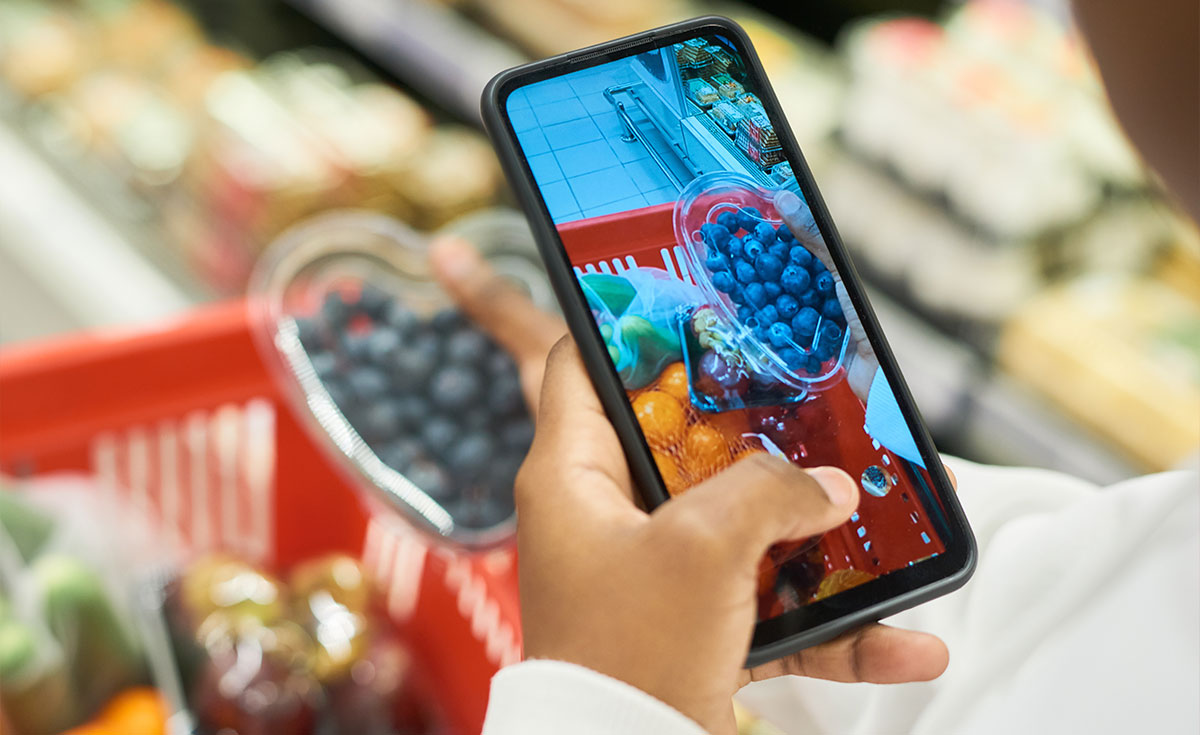By Doug Baker, Vice President, Industry Relations, FMI

Back in my school days, an experiment was something you did in science class.
You started with a hypothesis, conducted research, and ended with a conclusion. It all seemed to flow so neatly.
Today, in a real-life business setting, experiments aren’t always so seamless.
Consider how technology experimentation has played out in the food retail industry. In recent years, retailers have made progress in fits and starts, going after use cases ranging from better customer experience to improved efficiency. Experimentation eventually led to investments.
By 2020, all that work had really made a difference. As the pandemic arrived, new technologies were in place to improve performance, as outlined in the FMI’s latest The Food Retailing Industry Speaks report. Plans for further experimentation and investments are now underway, the report found.
Customer Experience and Efficiency
Speaks provides a look at how things were already coming into place a year ago. In 2019, some 72% of retailers were experimenting with new technologies to improve customer experience. That percentage grew even further in 2020 — to 83%.
I outlined in a recent blog post how experimentation and investments have dramatically improved food retail ecommerce capabilities. Meanwhile, almost half of retailers now predict technology will change the in-store shopping experience, and almost 80% are using technology to personalize shopper experiences.
Consider also how retailers are experimenting with new technology to boost efficiencies. In 2019 some 75% of retailers were doing this, and in the first half of 2020 that number has advanced to 81%. Even smaller retailers — with 10 or fewer stores — are jumping on the technology bandwagon.
Targeted In-Store Initiatives
Specific initiatives show how technology is making big advances with in-store strategies.
- Scan-and-Go: Some 33% of stores represented in this year’s Speaks survey provide in-store scan-and-go technology for customers, up from 26% the year before. In addition, slightly more than a quarter of stores are working on making this available.
- Mobile Checkout: Retailers are advancing the use of mobile checkout systems, which leverage either store- or shopper-owned devices. Some 13% of retailers offer this and 23% have plans to do so.
- Mobile Payments: One of the more dramatic advances is the addition of capabilities for mobile payments, which make the checkout process more frictionless. Almost 90% of stores now include this feature, which represents a big increase from recent years.
New and Emerging Technologies
An exciting area of focus is emerging technologies. Increasingly, artificial intelligence is gaining in adoption, with about a quarter of retailers using it for at least one application. Data analytics already plays a major role in food retail, with more than 80% employing it, such as for pricing/promotion or assortment planning/replenishment.
Other emerging areas of focus include ghost kitchens (food preparation facilities with no dining) — 6% using and 10% planning, and micro-fulfillment — 5% using and 10% planning. Robotics and dark stores are initiatives that so far have relatively low adoption but plenty of industry buzz.
Boosting Retail Performance
While it’s not possible for each retailer to invest in every technology, it’s important to consider which technologies deserve experimentation. I believe this is what food retailers are doing. A good approach is to test and assess. This enables you to make relatively quick decisions before launching into major investments. I am betting that 2021 will be another important year in the industry’s ongoing progress with technology.
Download The Food Retailing Industry Speaks 2020 Report

 Industry Topics address your specific area of expertise with resources, reports, events and more.
Industry Topics address your specific area of expertise with resources, reports, events and more.
 Our Research covers consumer behavior and retail operation benchmarks so you can make informed business decisions.
Our Research covers consumer behavior and retail operation benchmarks so you can make informed business decisions.
 Events and Education including online and in-person help you advance your food retail career.
Events and Education including online and in-person help you advance your food retail career.
 Food Safety training, resources and guidance that help you create a company food safety culture.
Food Safety training, resources and guidance that help you create a company food safety culture.
 Government Affairs work — federal and state — on the latest food industry policy, regulatory and legislative issues.
Government Affairs work — federal and state — on the latest food industry policy, regulatory and legislative issues.
 Get Involved. From industry awards to newsletters and committees, these resources help you take advantage of your membership.
Get Involved. From industry awards to newsletters and committees, these resources help you take advantage of your membership.
 Best practices, guidance documents, infographics, signage and more for the food industry on the COVID-19 pandemic.
Best practices, guidance documents, infographics, signage and more for the food industry on the COVID-19 pandemic.
